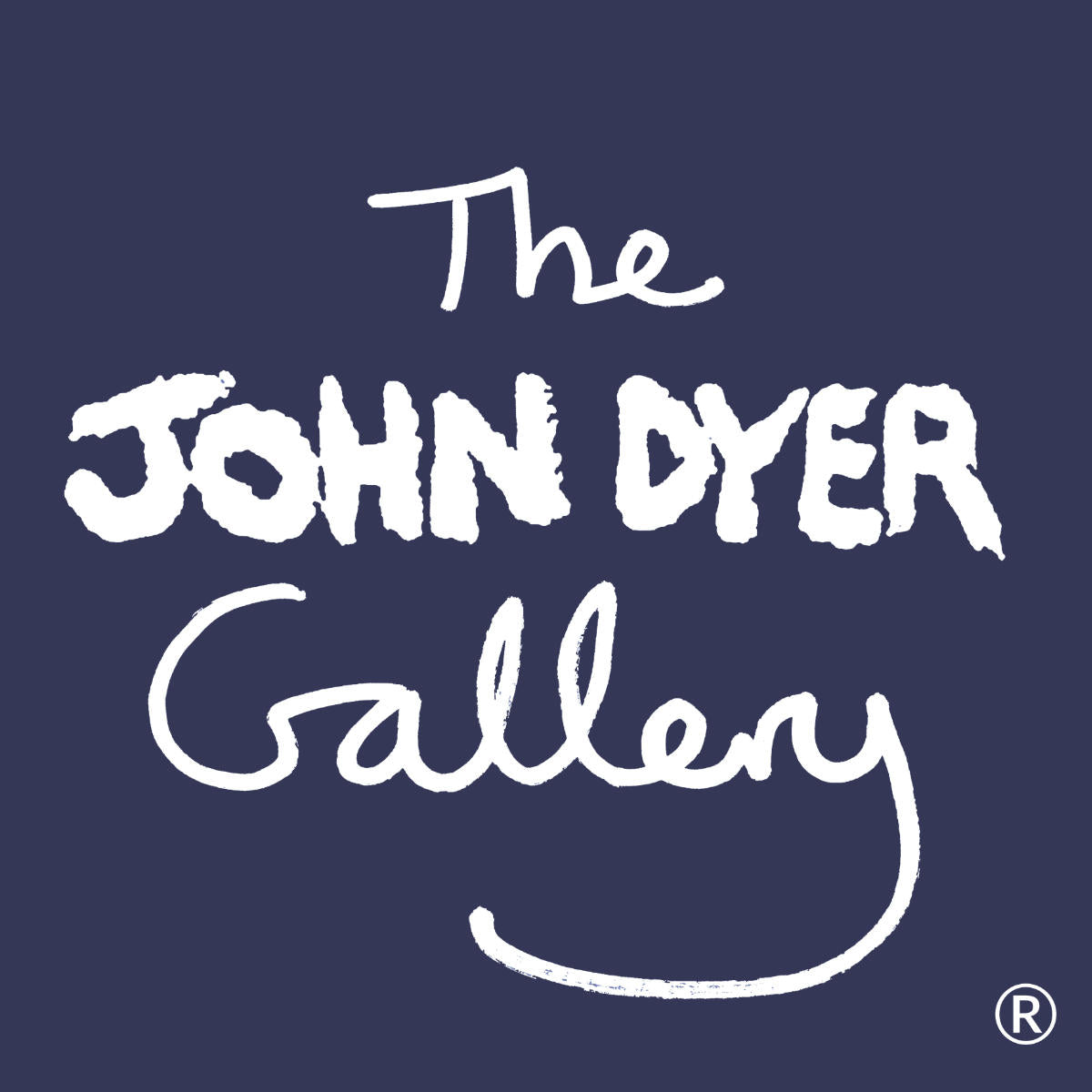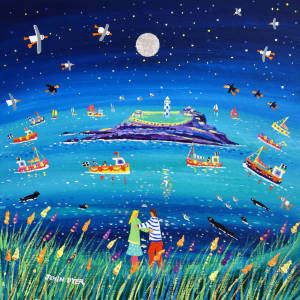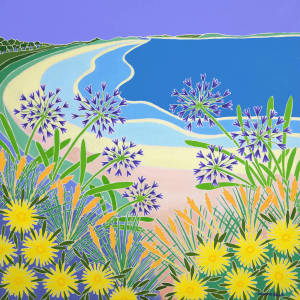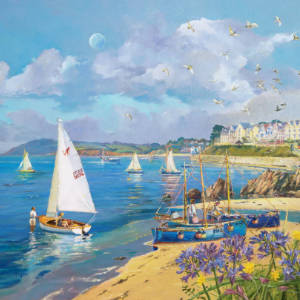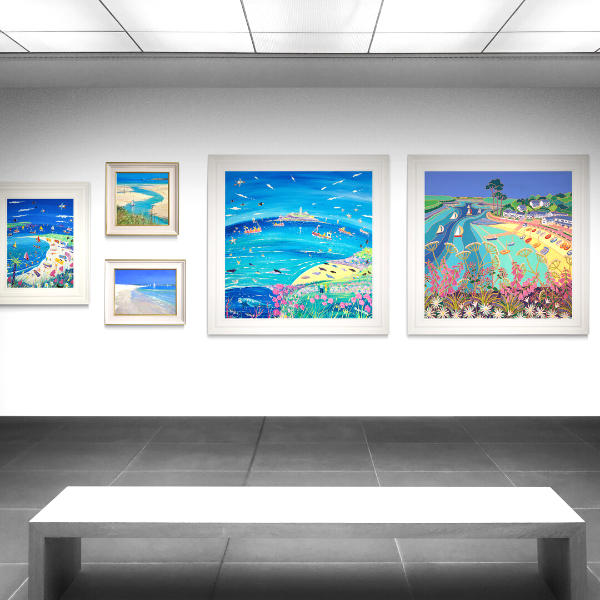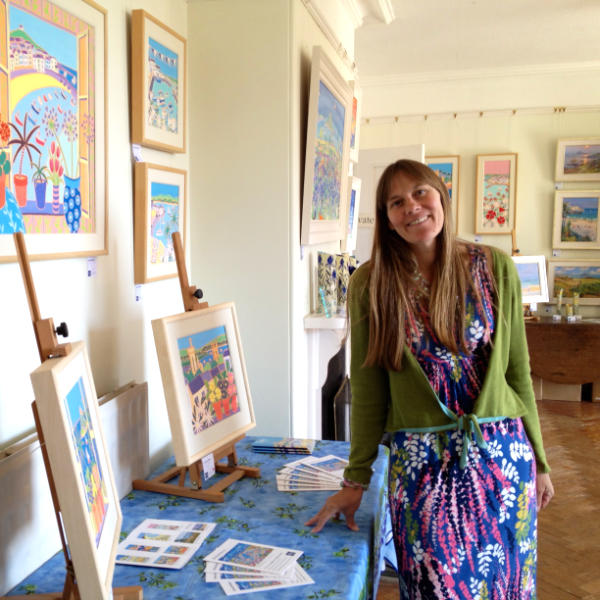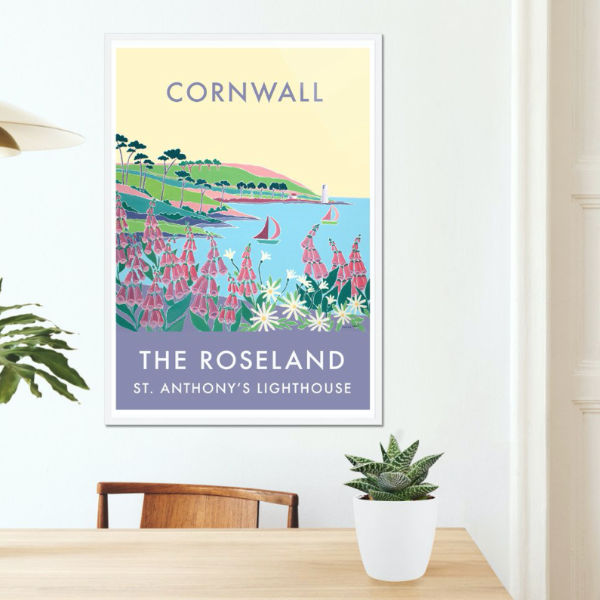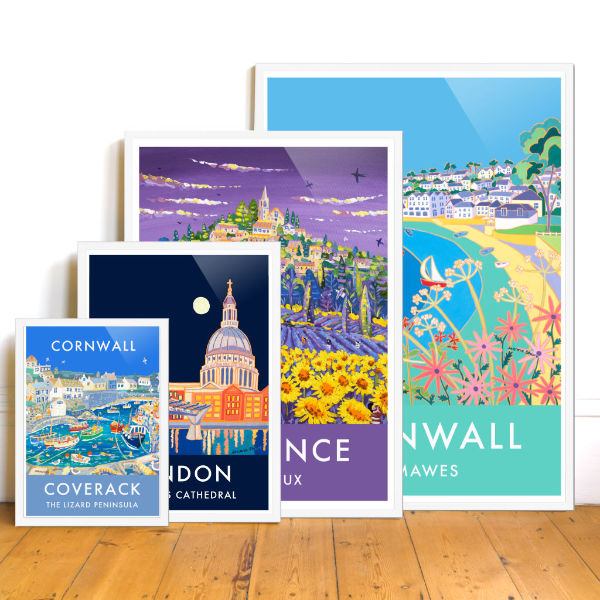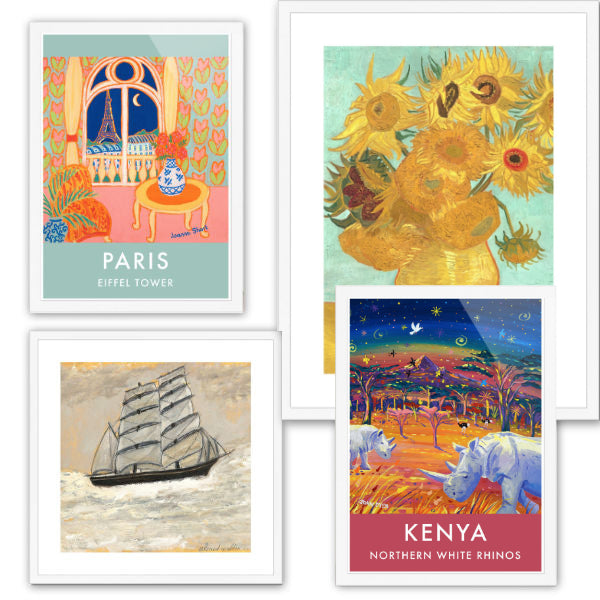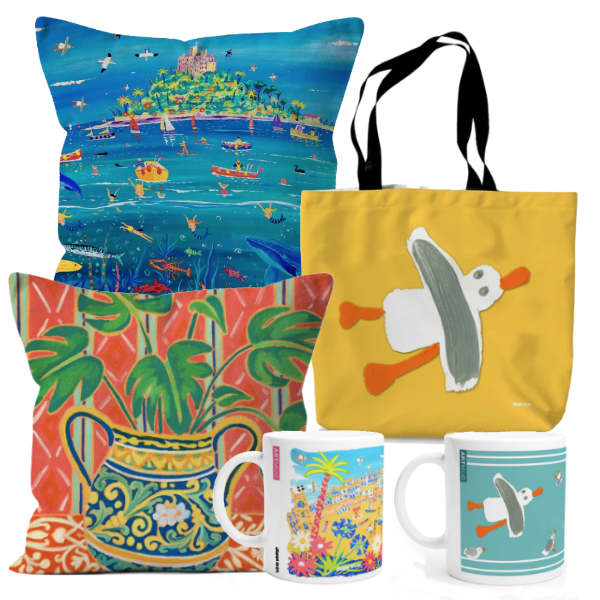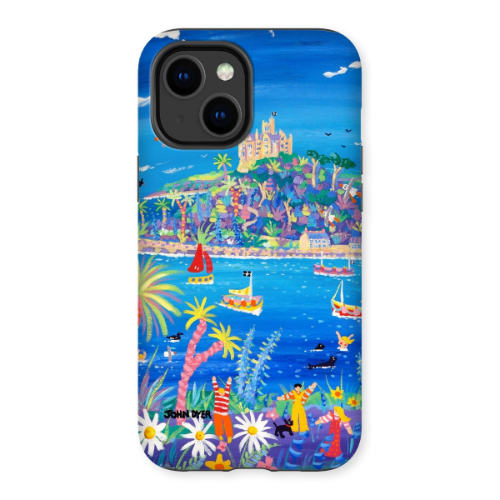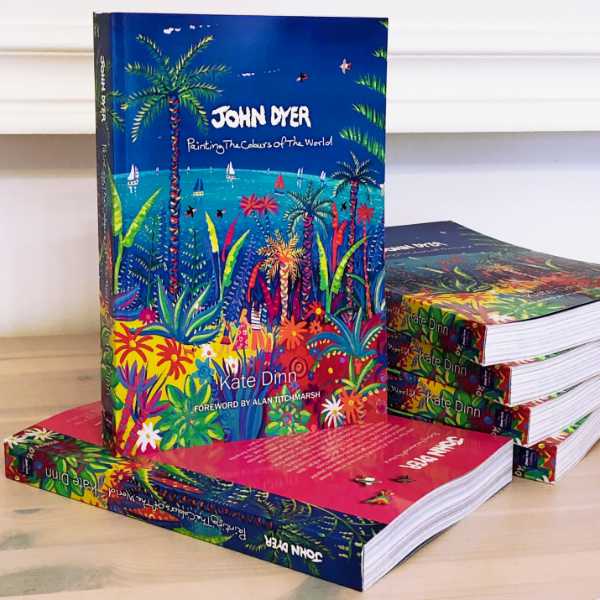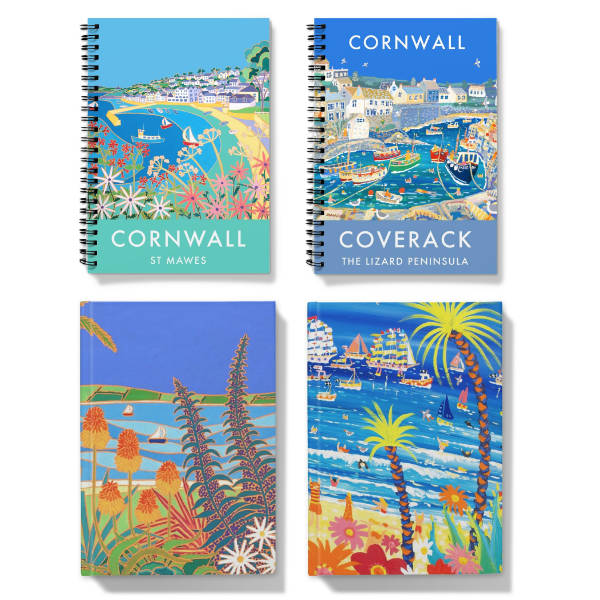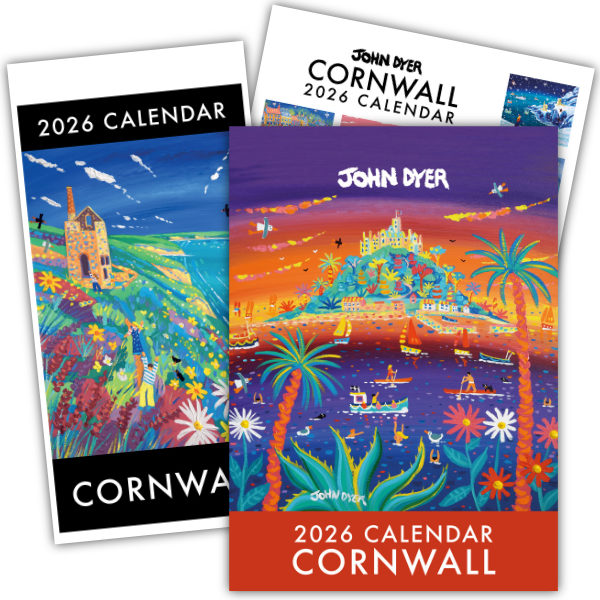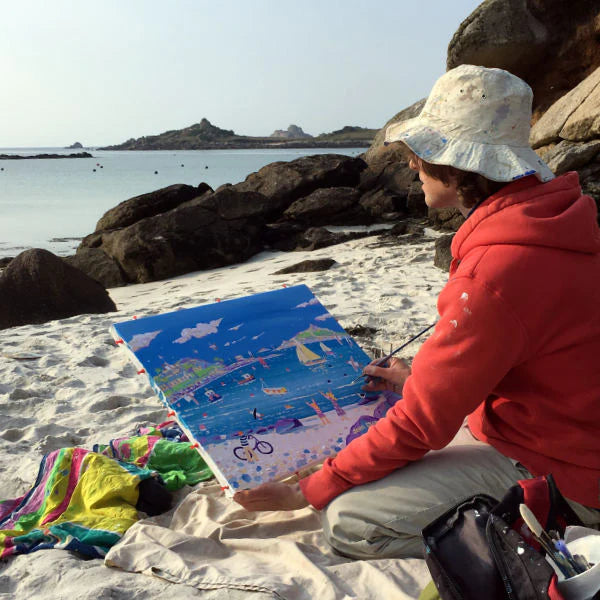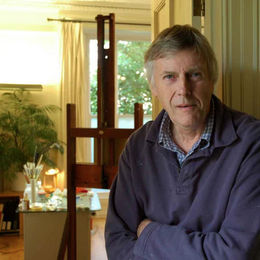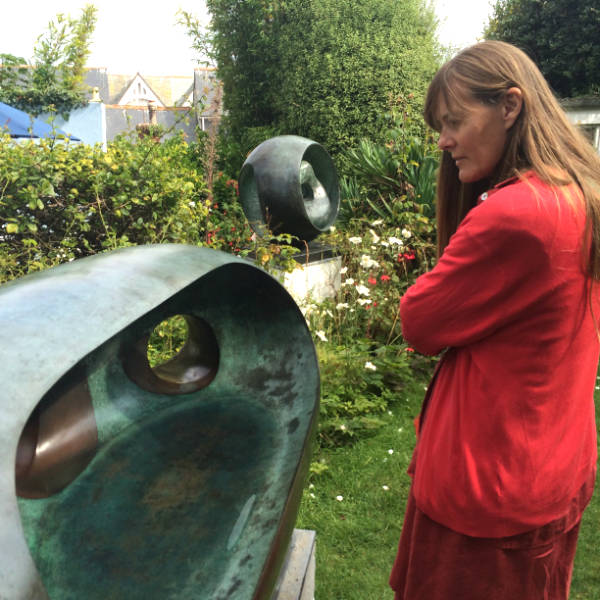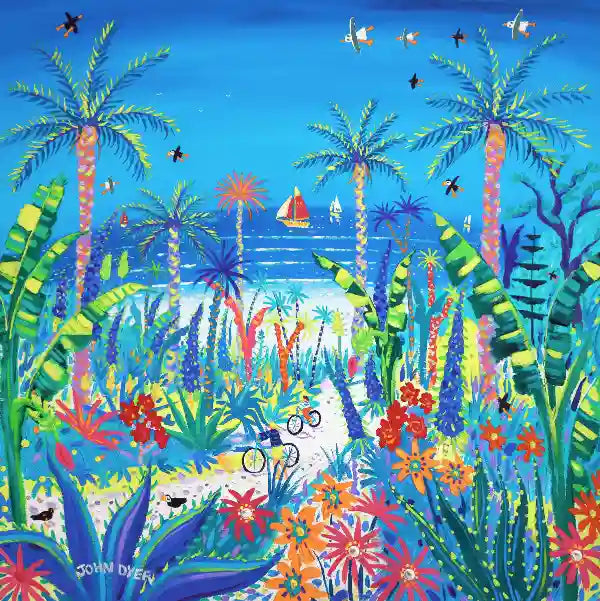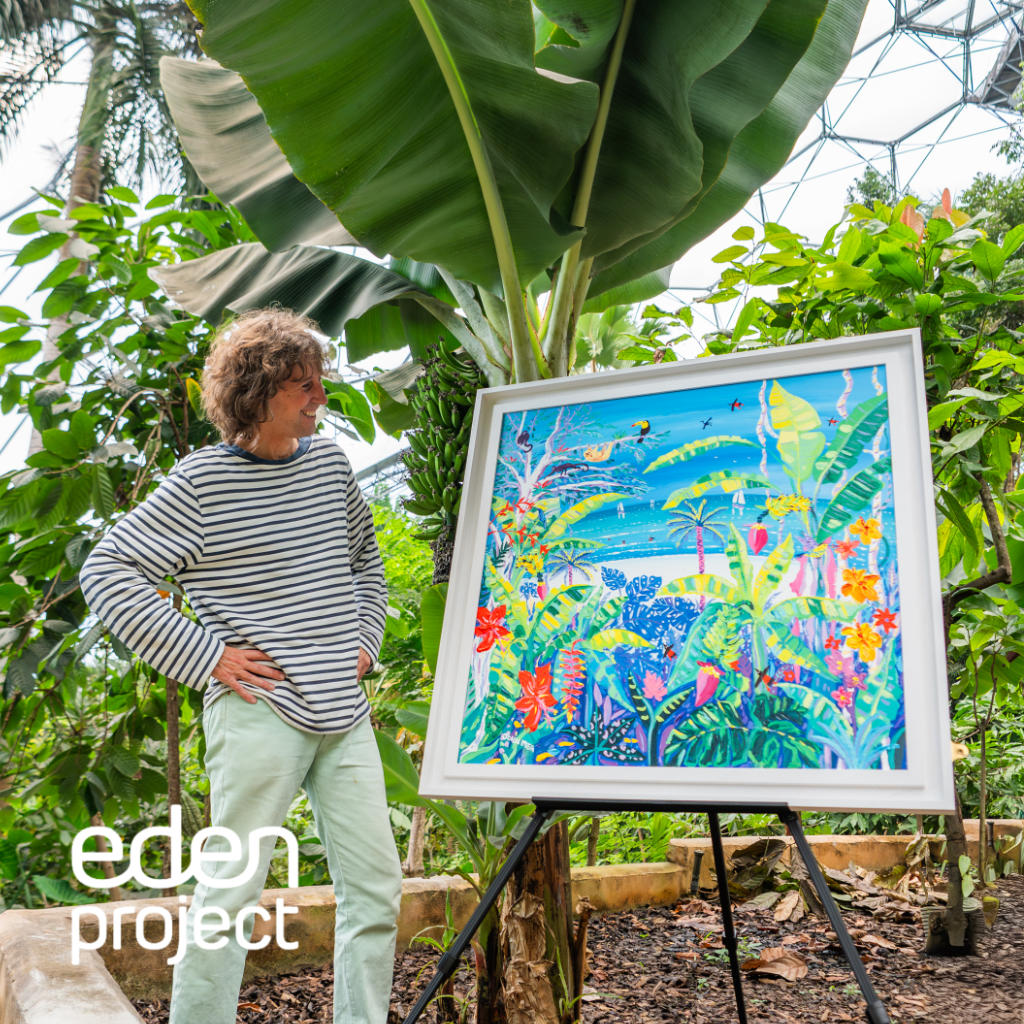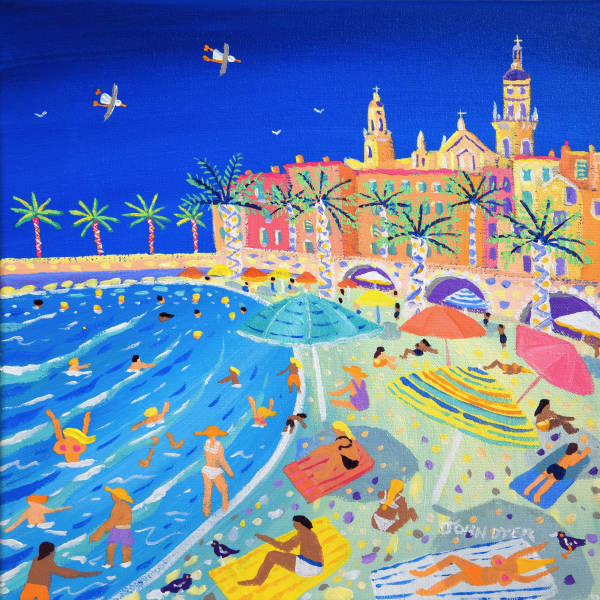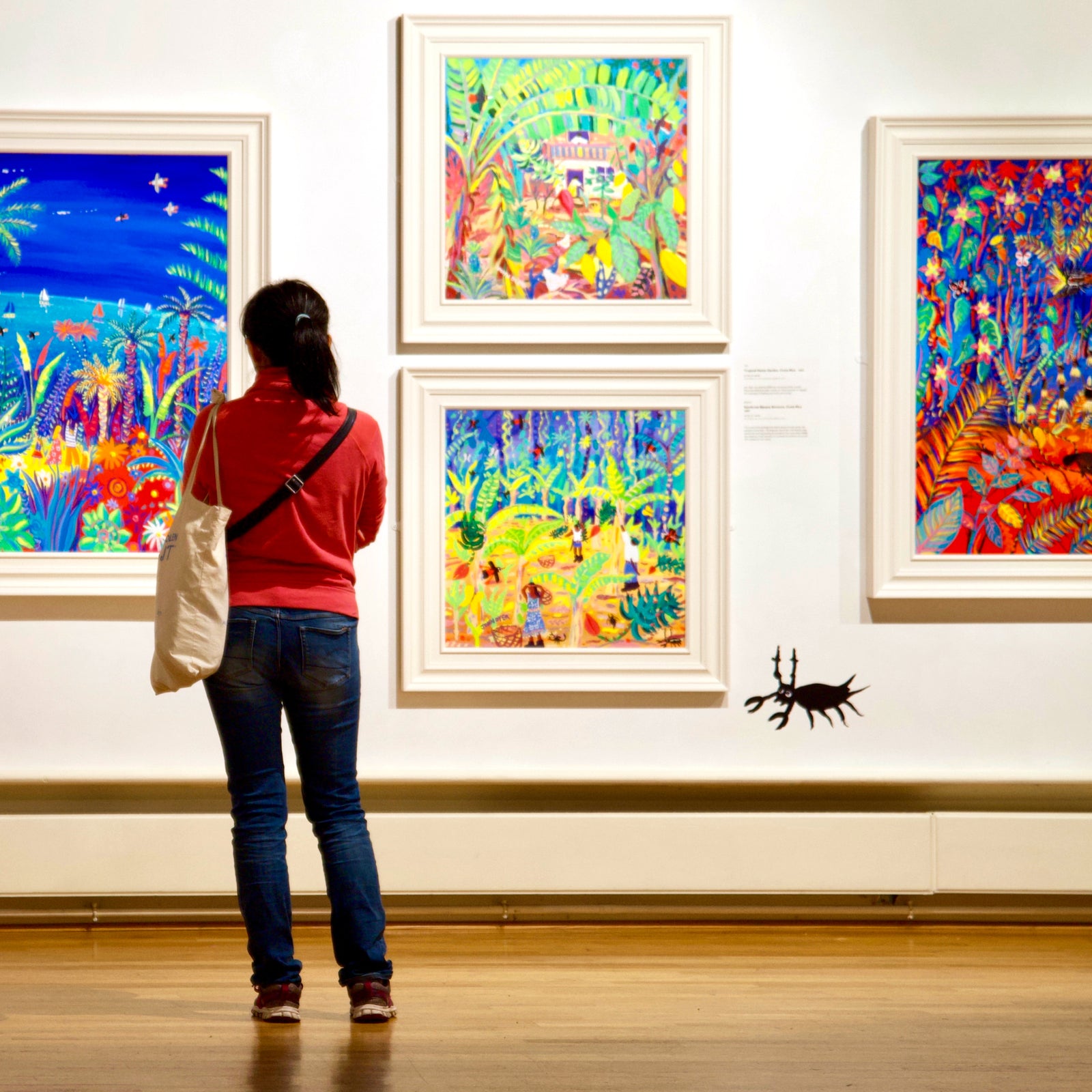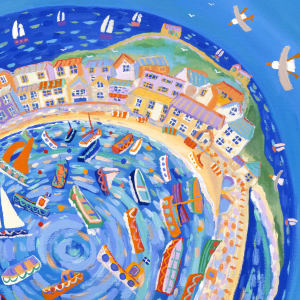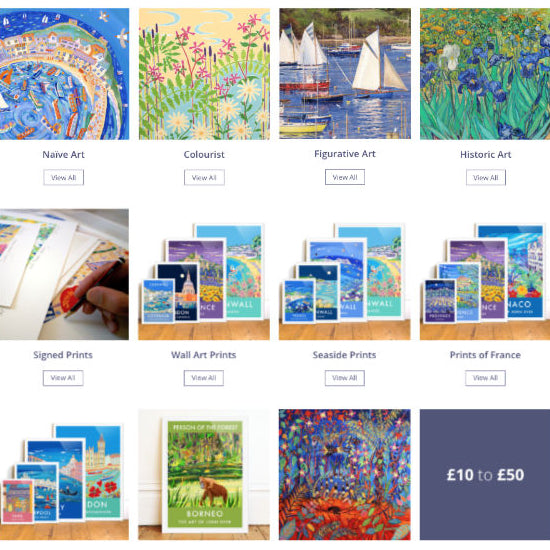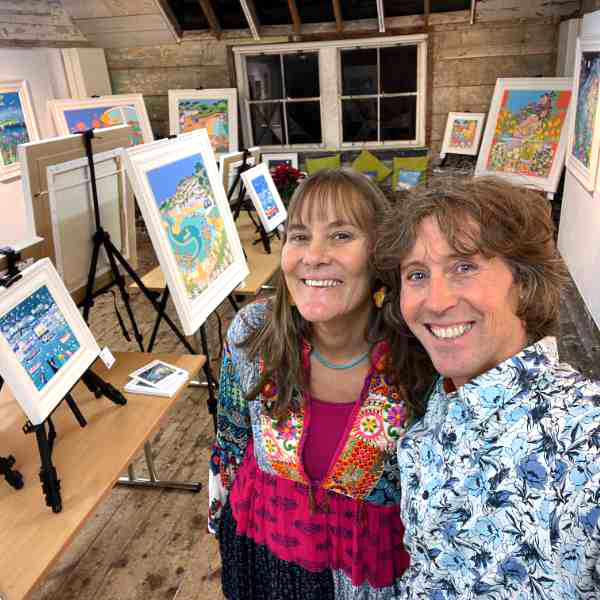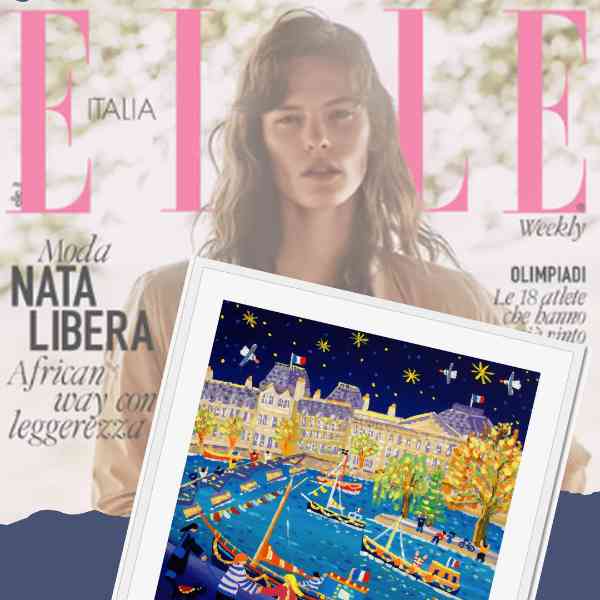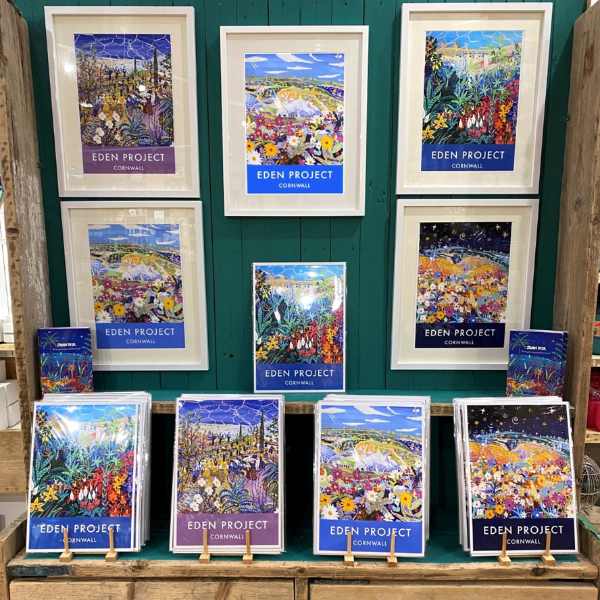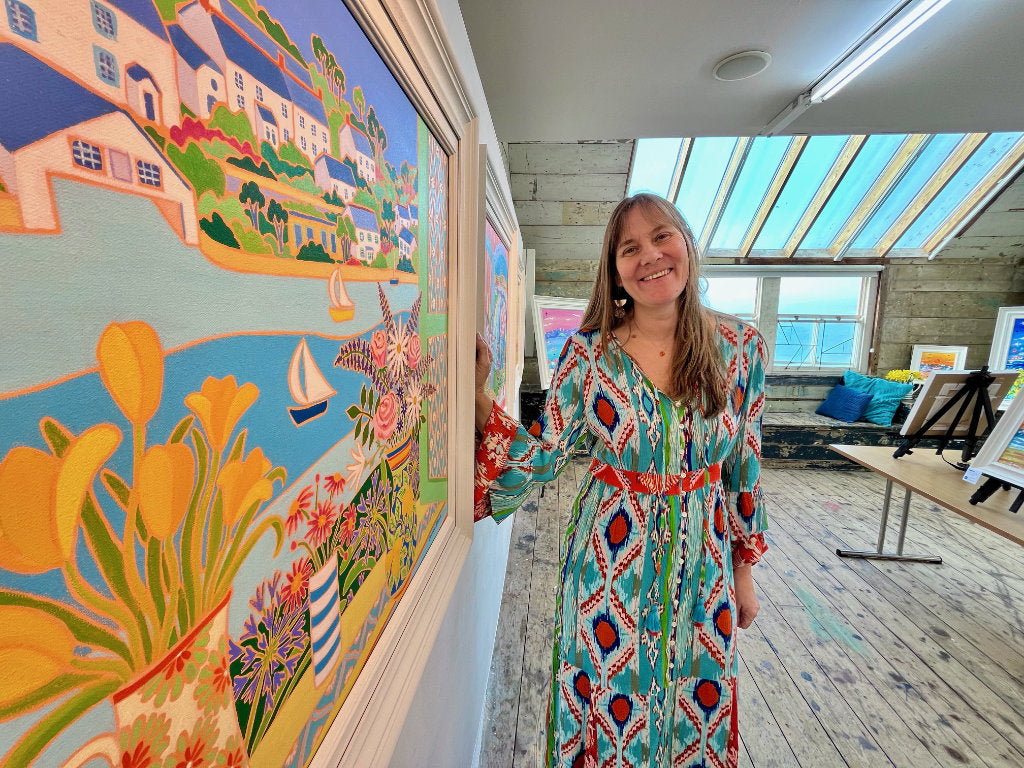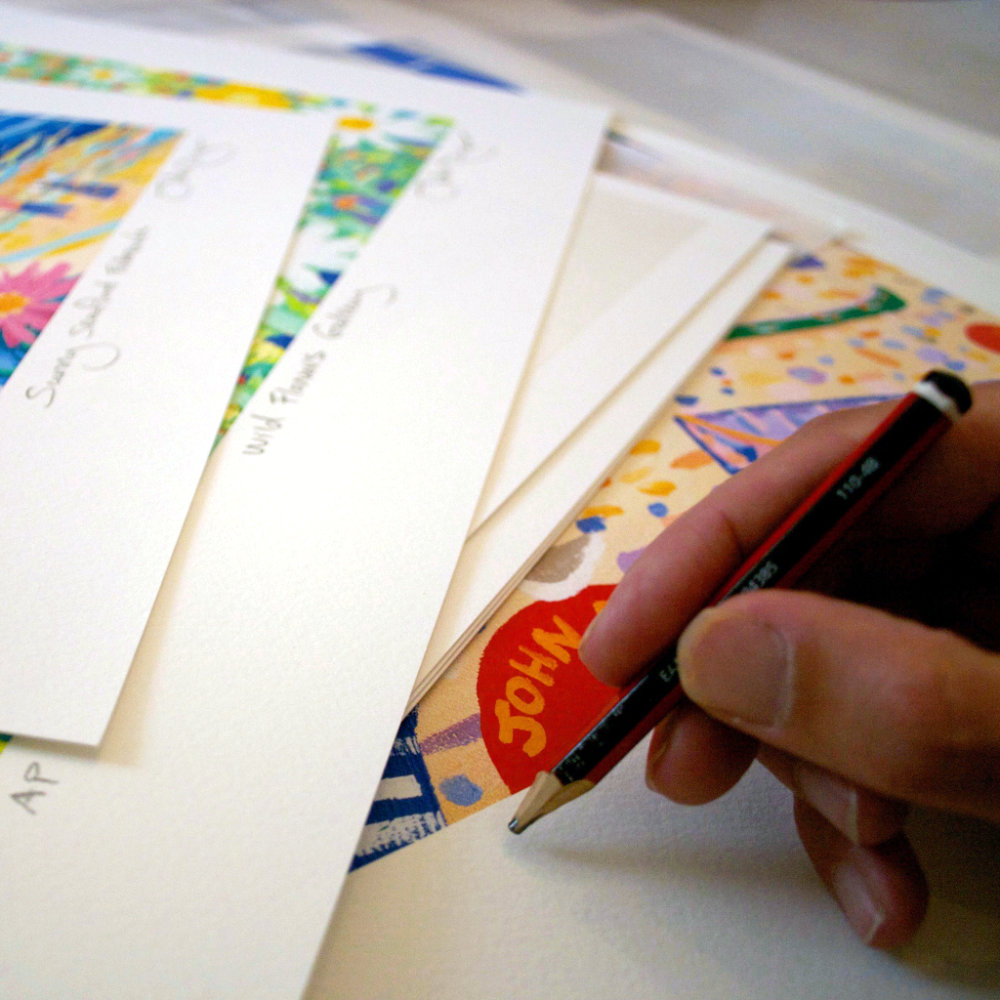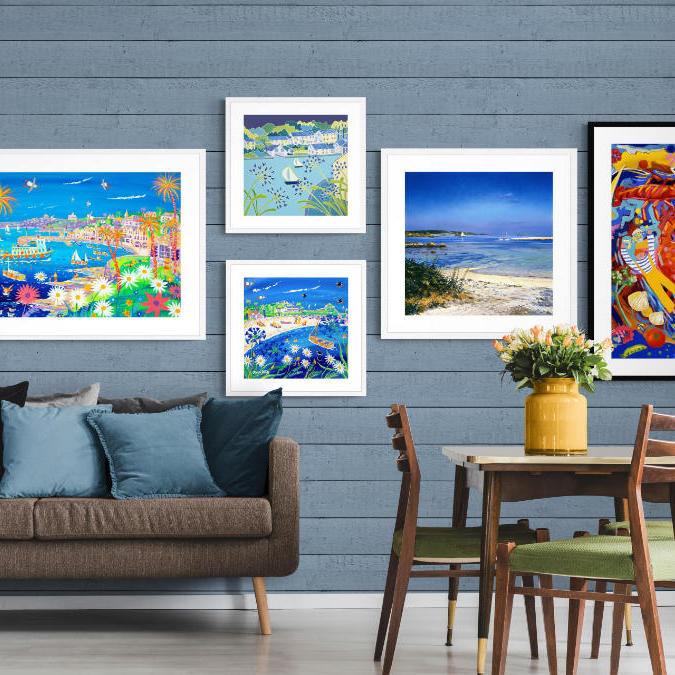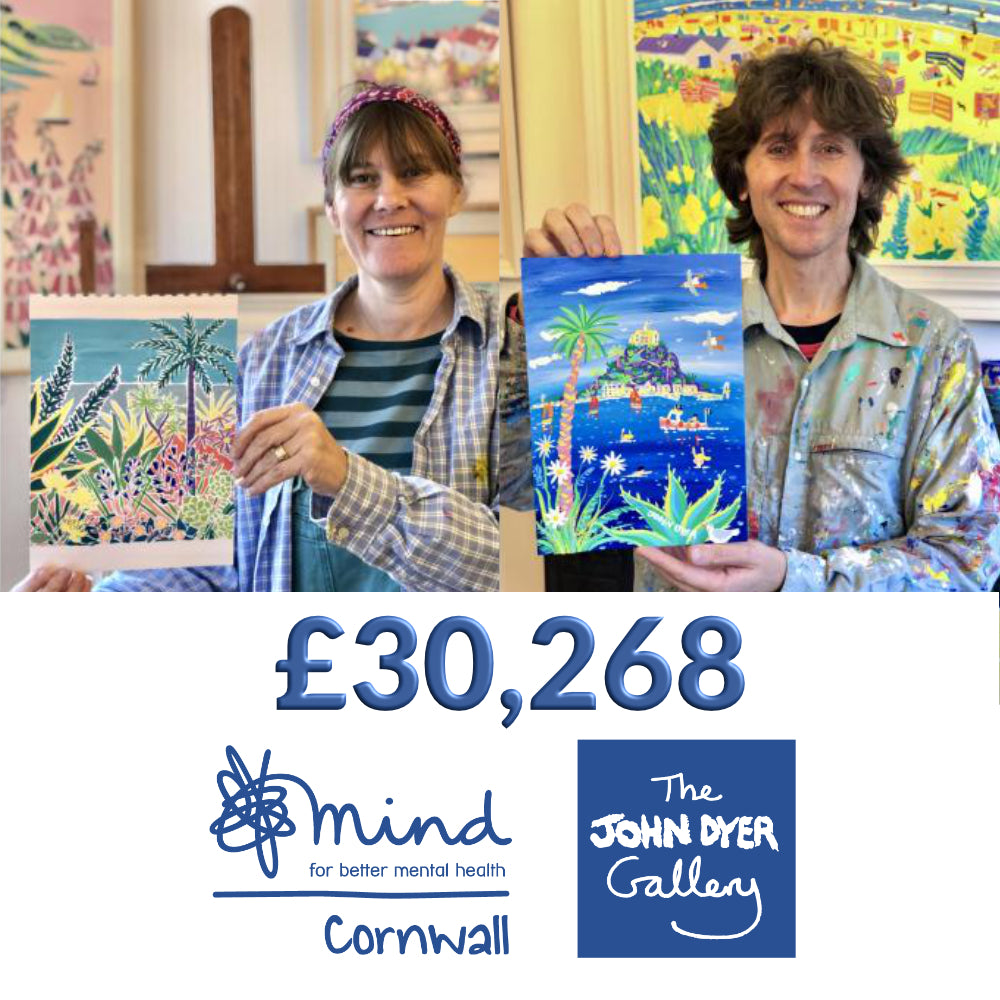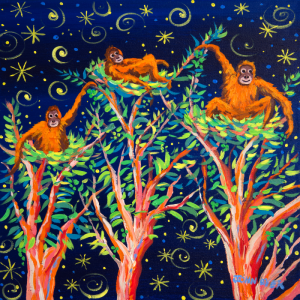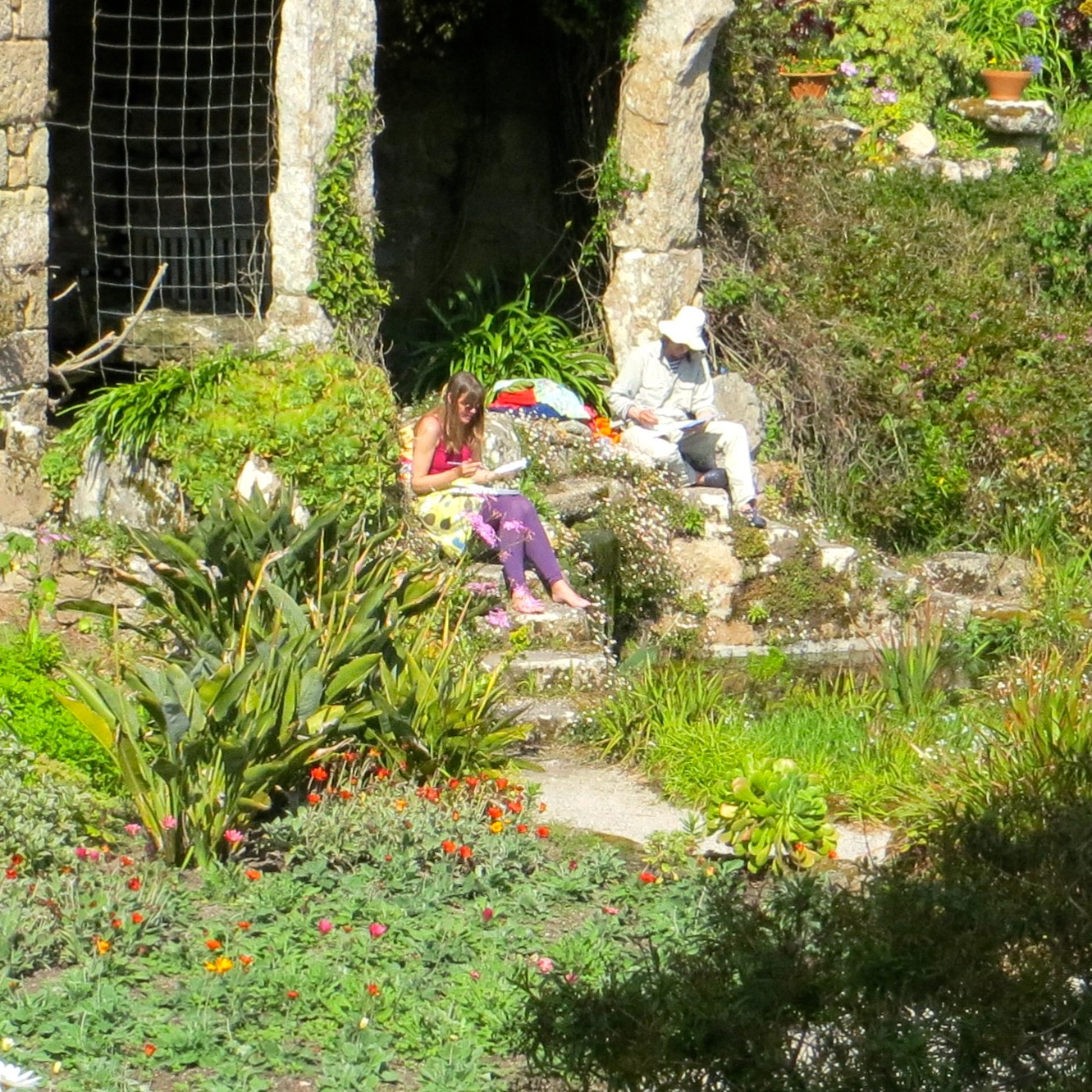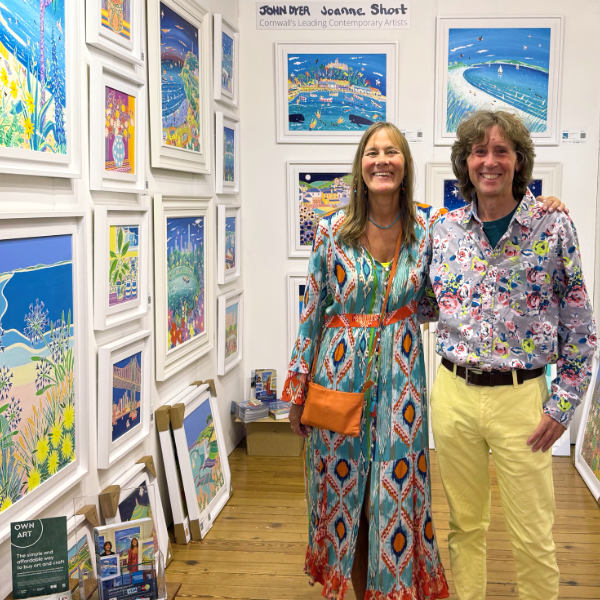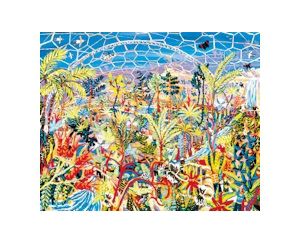
JOHN DYER PAINTING EDEN’S PARADISE
From the Amazon to the Mediterranean, Cornwall’s own Garden of Eden represents a world in miniature. To the Eden Project’s painter in residence, John Dyer, it also presents a wonderful opportunity for creating inspiring art.
When the door of the nursery glasshouse slid open it was like stepping off the plane in Brazil. Rows and rows of specimen plants from Amazonia, West Africa and Oceania stood waiting to be planted in the Eden Project’s biomes - Papaya trees covered in fruit, Balsa trees almost getting bigger before my eyes, Cheese Plants, Palms, Oranges, Lemons, Cacti, Sugar Cane, leaves of all shapes and sizes. It was fantastic. That was in 2000, and I have ben working with the Eden Project as the painter-in-residence ever since.
I started my residency at Wateringlane Nursery and also at the construction site of the biomes. The following year, Eden purchased my painting ‘Garden of Eden’ and launched the John Dyer/Eden Project range of calendars, diaries, posters, cards and a huge retail display. One of my paintings was also used as the official print to launch the Eden Project. This had a major impact on my work and dramatically increased the number of people who knew about my paintings. Since then I have painted at Eden, on related scientific projects abroad, and even with celebrities such as Alan Titchmarsh and Kim Wilde to publicise Eden’s environmental work.
People often ask how the relationship works: am I really ‘resident’ on site, and can I paint what I want or do I have to follow Eden’s instructions ? The answer to these questions-and the reason I am still working with Eden - is that our relationship is founded on simplicity, trust and a shared vision for the environment. Iam not on site at Eden every day - or even every month. I paint exactly what I want, when I want. If Eden wishes to exhibit or publish the resulting work, that is great, and it means I can remain a true artist, following my own heart and interests.
Tropical painting
The Humid Tropics Biome at Eden is a great place in which to paint as it’s almost exactly like a rainforest - without the danger of rain. It’s very humid; when the sun comes out the sprinklers are turned on so a really hot steam is generated. My acrylic paints stay very wet if the humidity is high, so I have to paint wet-on-wet, which is exciting as it creates a different feel to my normal work. In parts of the biome, however, it is much drier and you can feel like you are being gently slow-roasted and the paints start to dry immediately.
I mainly use acrylics because I’ve found that oil paints can be difficult in unusual environments. Oils not only tend to creep off the canvas onto me, plants and other people, but when I travel to paint Eden projects abroad, the airlines will not allow oil paint or turpentine onto the plane.
The speed at which acrylic dries has two huge benefits: the first is that it often allows me to work dry-on-dry within a few minutes, keeping the colours fresh and me on my toes. The other benefit is that I can roll my canvases up at the end of the day, jump in a Land Rover, helicopter or aeroplane, and re-stretch them when I get back to the studio.
The paint does dry very, very quickly in the dry tropics, such as in the south of Australia, but I do not see this as a problem. When I paint on location, there are many influencing factors: the speed that the paint dries, the insects that get caught up in it, the dust, heat, people and weather. Sometimes these things make a painting a struggle to realise, but it is exactly this struggle that will make the painting unique. The painting thus ends up recording the atmospheric conditions, my frame of mind and the landscape all in one. It becomes a special record of a unique moment in time.
I paint directly onto the canvas without drawing first so that my work is spontaneous. First, I do a brief ‘air drawing’ with a dry paintbrush for about five seconds over the canvas and I visualise in my mind the key elements of the work. Then I commit lots of paint quickly and directly to the surface, mixing colours on the canvas as I go.
I have to prepare myself for the crowds at eden but I’ve got used to painting in public. the staff are very good to me and the ‘green team’ will often allow me into a roped-off area, or even rope off an area for me. I have even been allowed to don hard hat and climbing gear and climb through the roof of the main biome to paint from on high.
I quite enjoy people watching me paint, though I usually start about 7am before the site is open to the public and make sure all my main decisions about painting have been made before the crowds arrive. Once the people arrive they - and their interaction with the plants - then become my subject.
People are generally very polite and tend not to stand over me making comments. I think that when you see a work of art created in situ you can connect to it and see what the artist is trying to achieve, and this is one of the reasons I enjoy not only painting at Eden but also on location, as well.
Recently I have been helping Eden to raise over £1 million for African artists. Falmouth Art Gallery and the Eden Project are working together on this and my paintings have been used to highlight the power of art and the environment. I will keep my fingers crossed.
Artist: John Dyer
Painting: “Garden of Eden”
Size: 33 x 40 inches
Medium: Acrylic on board
In the permanent collection of The Eden Project
Courtesy of The John Dyer Gallery
Artist: John Dyer
Painting: “Jungle Bananas”
Size: 24 x 24 inches
Medium: Acrylic on canvas
Painted for Bioversity International
Courtesy of The John Dyer Gallery
Artist: John Dyer
Painting: “Africa Calling Live 8”
Size: 33 x 40 inches
Medium: Acrylic on board
Private Collection in the UK
Courtesy of The John Dyer Gallery
